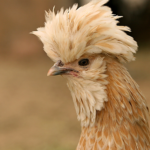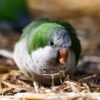- How Long Does A Quaker Parrot Live? - 17 May 2024
- 4 Hacks on Keeping Your Home Clean With Pets - 28 March 2024
- 5 Things to Know Before Bringing Home a New Kitten - 26 March 2024
Birds are the most fascinating creatures on earth, with many colors, patterns, and behaviors. Among the vast species, the bird with a bright orange beak stands out as a beacon of beauty and uniqueness. In this blog, we will look into the list of birds with orange beaks. Let’s get into this.
Toco Toucan

- Scientific name: Ramphastos Toco
- Length: 55 to 65 cm (21 to 25 in)
- Weight: 500 to 876 g (17 to 30 ounces)
- Wingspan: 109 to 152 cm (43 to 60 inches)
- Lifespan: 5-25 years
- Conservation Status: Least Concern (Population Decreasing)
This bird is known as the common toucan or giant toucan. It is the largest species of toucan and is native to forests of South America, particularly in Brazil, Argentina, Paraguay, and Bolivia. The main feature of the Toco Toucan is its beaks, which can measure up to 20 centimeters in length. The beak is lightweight due to its hollow structure. This unique beak serves multiple purposes. It can grow up to 55-65cm, and the average weight of the bird species is 500 to 876 g. Their diet includes fruit that can be easily plucked from trees.
Atlantic Puffin

- Scientific name: Fratercula arctica
- Length: 28 to 30 cm (11 to 12 in)
- Weight: 309 to 549 g (10.9 to 19.4 ounces)
- Wingspan: 47 to 63 cm (19 to 25 in)
- Lifespan: 3-25 years
- Conservation Status: Vulnerable
They are known as the common puffin, a species of seabird in the auk family. The bird Atlantic Puffin feeds on fish, sand eels, and herrings. These seabirds are small to medium-sized, about 28 to 30 cm long. They have a stocky build with short wings and webbed feet, which make them excellent swimmers and divers. They appear in large colonies of Atlantic puffins gathered on their home grounds. The average lifespan of the bird species is 20 years in the wild.
Sandwich Tern

This is a graceful seabird belonging to the tern family. It was Named after the Sandwich town in Kent England where it was first described. The Sandwich Tern is a medium-sized bird measuring around 37 to 43 cm long with a wingspan of approximately 94 to 105 cm. It has a slender body, long, pointed wings, and a deeply forked tail. It is primarily fed on fishes such as sand lance and mullet. It is also seen eating shrimp, squid, marine worms, and many insects. The average lifespan of the bird species is 12 years in the wild.
Variable Oystercatcher

- Scientific name: Haematopus unicolor
- Length: 42 to 47 cm (16 to 18 in)
- Weight: 678 to 724 g (23.9 to 25.5 oz)
- Wingspan: 72 to 91 cm (28 to 35 in)
- Lifespan: 4-10 years
- Conservation Status: Least Concern
They are bird species of shorebirds found along the coastlines of Australia and New Zealand. It is a member of the Oystercatcher family known for its appearance and feeding habits. The Variable Oystercatcher is a medium-sized bird measuring about 42 to 47 cm from beak to tail. They have a short, sturdy body with a thick neck. The bird’s primary diet includes a range of mollusks, crustaceans, worms, and sometimes small fish.
Zebra Finches

- Scientific name: Haematopus unicolor
- Length: 42 to 47 cm (16 to 18 in)
- Weight: 678 to 724 g (23.9 to 25.5 oz)
- Wingspan: 72 to 91 cm (28 to 35 in)
- Lifespan: 4-10 years
- Conservation Status: Least Concern
These are the birds that are mostly seen in the regions of Central Australia. They are popular as pets, which are named for the black and white barring on their chest and sides. The average lifespan of the bird species is 5 to 9 years, but may live as long as 12 years. Their main diet includes grass seeds, and are seen eating semi-ripe and ripe seeds. The natural predators of the bird species include the tiger snake, brown snake, dragon lizard, and house mouse.
American White Pelican

- Scientific name: Pelecanus erythrorhynchos
- Length: 130 to 180 cm (50 to 70 in)
- Weight: 3.5 to 13.6 kg (7.7 to 30 lb)
- Wingspan: 240 to 300 cm (95 to 120 in)
- Lifespan: 8 – 30 years
- Conservation Status: Least Concern
This large aquatic bird belongs to North America and used to move south and to the coasts of Central America and South America during winter. It can grow up to about 50-70 inches along with huge orange beaks measuring 11.3-15.2 inches in males and 10.314.2 inches in females. The total wingspan of the bird species is 95-120 inches. They mostly feed on fish, such as common carp and shiners.
Malachite Kingfisher

- Scientific name: Corythornis cristatus
- Length: Approximately 13-15 cm (5-6 inches)
- Weight: Around 20-30 grams (0.7-1.1 ounces)
- Wingspan: Not applicable as the Malachite Kingfisher’s wings are relatively short and rounded.
- Lifespan: Estimated to be around 7-10 years in the wild.
- Conservation status: Least Concern (IUCN)
They are mostly seen in the regions of Africa south of the Sahara. It was first described by the German naturalist Peter Simon Pallas. It can grow up to 13 cm long and prefers aquatic vegetation near slow-moving water or ponds. Malachite Kingfisher species have the head of the bird, a short crest of black and blue feathers, and metallic blue upper parts. The beak in the young birds is black and later changes the color to reddish-orange in adults. The legs are bright red.
Oriental Dwarf Kingfisher

- Scientific name: Ceyx erithaca
- Length: Approximately 13 cm (5.1 inches)
- Weight: Around 10-14 grams (0.35-0.5 ounces)
- Lifespan: Estimated to be around 5-7 years in the wild.
- Conservation status: Least Concern (IUCN)
This bird, known as the black-backed kingfisher or three-toed kingfisher, belongs to the Alcedinidae family. The primary diet includes insects, spiders, worms, crabs, fish, frogs, and lizards. This is the smallest kingfisher species that can grow up to 12.514 cm in length, including the beak’s length. The main diet includes mantises, grasshoppers, flies, and winged ants.
Northern Cardinal

- Scientific name: Cardinalis cardinalis
- Length: 21 to 23.5 cm (8.3–9.3 in)
- Weight: 33.6 to 65 g (1.19–2.29 oz)
- Wingspan: 25 to 31 cm (9.8–12.2 in)
- Lifespan: 3-5 years
- Conservation Status: Least Concern
The northern cardinal is a well-known bird species native to North America. They are medium-sized songbirds with distinctive crested heads and strong, thick bills. Males are easily recognizable with bright red plumage on their bodies and crests of black masks around their eyes. Both males and females are of different appearance. The male is vibrant red, and the female is reddish olive.
Seychelles Bulbul

- Scientific name: Hypsipetes crassirostris
- Length: Approximately 20-23 cm (7.9-9.1 inches)
- Weight: Around 45-55 grams (1.6-1.9 ounces)
- Lifespan: Estimated to be around 10-15 years in the wild.
They are known as the Seychelles black bulbul, a bird species. The Seychelles bulbul has a distinctive appearance with glossy black plumage and a long tail. The male and female birds have a similar appearance. It prefers dense vegetation areas and can adapt to human-modified habitats.
Information source on birds: Do Ducks Have Teeth?
Final Thoughts
These 10 birds with bright orange beaks are not only stunning in appearance but also play crucial roles in their respective ecosystems. Each of them is a testament to the beauty and diversity of the avian world. So, the next time you’re out in nature, keep an eye out for these captivating creatures – you won’t be disappointed
















